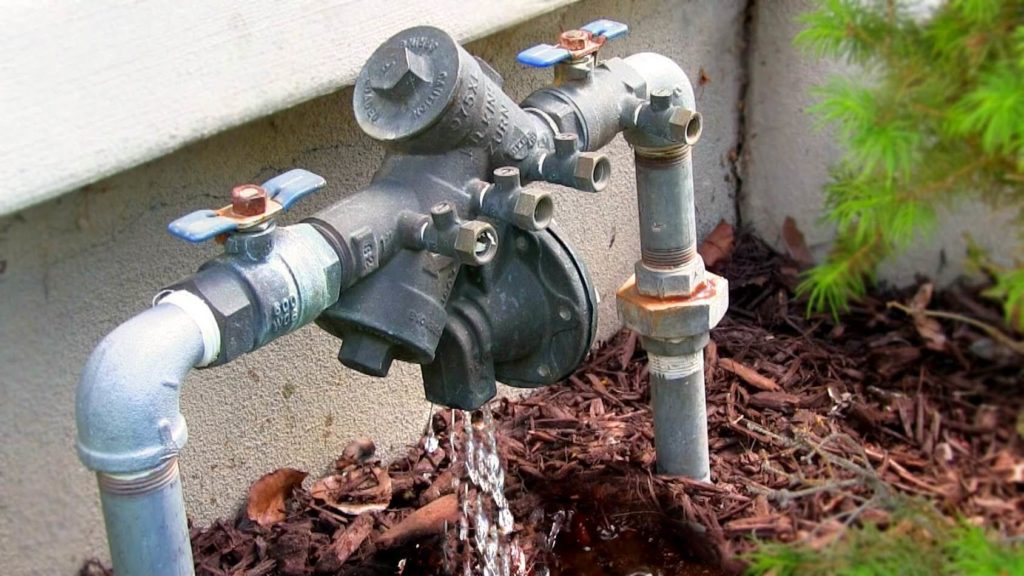Opposite the Flow: The main Guide to Backflow Testing and Your current Health
In today's world, the particular safety of our hydrant is paramount. Annual Backflow Testing may not know that something as simple as a difference in water pressure can cause serious health dangers. Backflow, the unnecessary reversal of normal water flow, poses some sort of significant threat to our drinking drinking water and will introduce contaminants that jeopardize our health. This is when backflow testing becomes essential. Regular testing not necessarily only protects your house but also guarantees the protection of the particular water consumed by your family, employees, or customers.
Understanding precisely why backflow testing is essential goes beyond pure compliance with community regulations; it’s in relation to safeguarding public well being and maintaining the integrity of your normal water supply system. This guide will walk a person throughout the ins and even outs of backflow testing, exploring the signs that indicate when testing will be needed, the procedure included, and why ignoring it can cause costly consequences. Whether you are a homeowner, a new business owner, or perhaps managing an business facility, knowing the importance of backflow reduction could make all the difference in safeguarding your water top quality and ultimately, your health.
Knowing Backflow and It is Risks
Backflow is the process where normal water flows in the reverse direction than meant, potentially allowing pollution to enter the clean water supply. This situation often occurs due to a drop inside of water pressure, which can happen regarding various reasons, which includes pipe bursts or even heavy usage. If backflow occurs, harmful substances from polluted sources like écoulement, sewers, or gardening runoff can imbed the drinking water technique, posing serious health and fitness risks to occupants and property users.
The hazards associated with backflow are significant. Infected water can business lead to a bunch of health problems, ranging from mild gastrointestinal illnesses to serious diseases caused simply by parasites, viruses, and chemicals. Vulnerable foule, for instance children, typically the elderly, and individuals with compromised resistant systems, are especially in danger. It is certainly crucial to understand that backflow can occur anywhere, by residential homes to commercial and industrial properties, making backflow testing and elimination an universal concern.
Protecting against backflow is not only about protecting individual qualities; it is necessary for the overall well being and safety involving the community. Public health initiatives and regulations often mandate backflow prevention measures to guard the drinking water supply. By knowing the potential risks associated with backflow, property owners could take proactive actions to ensure their water remains secure and clean, therefore contributing to the particular well-being of the entire community.
Backflow Testing Frequency and Needs
Building the right consistency for backflow assessment is essential with regard to maintaining a secure water supply. Many local regulations need that residential in addition to commercial properties undergo backflow testing at least one time a year. This annual requirement ensures that any potential issues are found and addressed promptly, preventing contamination regarding the drinking normal water. Homeowners and real estate managers must be positive in scheduling these kinds of tests to adhere to local laws and safeguard their water quality.
Within some cases, certain factors may require more frequent examining. For instance, properties with high normal water usage, such since restaurants or professional facilities, may require testing every half a dozen months to ensure safety and compliance. Moreover, if your backflow prevention device offers previously failed or even is older, it may require more normal checks. Understanding typically the specific regulations throughout your city can help you determine the correct schedule for backflow testing.
To comply together with testing requirements, this is crucial to be able to choose a professional backflow tester. The tester must be acquainted with local regulations and enjoying the proper training to execute the tests accurately. Before scheduling the test, property owners ought to verify the certification with the testing professional to ensure safe and even reliable service. Holding documentation of each test is also essential for both legitimate compliance and traffic monitoring your property's maintenance history.
Best Practices regarding Backflow Prevention

Maintaining a new properly functioning backflow prevention device is crucial for protecting your water provide. Regular inspections in addition to testing should end up being part of an extensive maintenance plan. It's recommended to timetable backflow testing yearly to ensure the gadgets are functioning appropriately and to address any potential issues prior to they lead in order to contamination. Keeping the detailed maintenance record can also help track the situation and performance of your respective backflow preventers over time.
Correct installation of backflow prevention devices plays the role inside of their effectiveness. https://baxter-bundgaard-2.mdwrite.net/stop-the-flow-associated-with-trouble-the-crucial-need-for-backflow-testing to seek the services of certified professionals who are knowledgeable about local codes and polices. Make certain that the products during installation in accordance with the manufacturer’s guidelines and business best practices. Moreover, consider the particular requirements several styles of properties, seeing that commercial and household systems may possess unique needs.
Educating occupants or employees regarding the need for backflow prevention can advance a culture involving safety and ecological responsibility. Encourage them to record any unusual alterations in water strain or other symptoms that may indicate a difficulty. Creating Annual Backflow Testing of clear action plan regarding addressing backflow issues and involving area water authorities will also enhance total water safety in the community. This proactive method not only defends public well-being but in addition reduces the chance of high priced repairs later on.